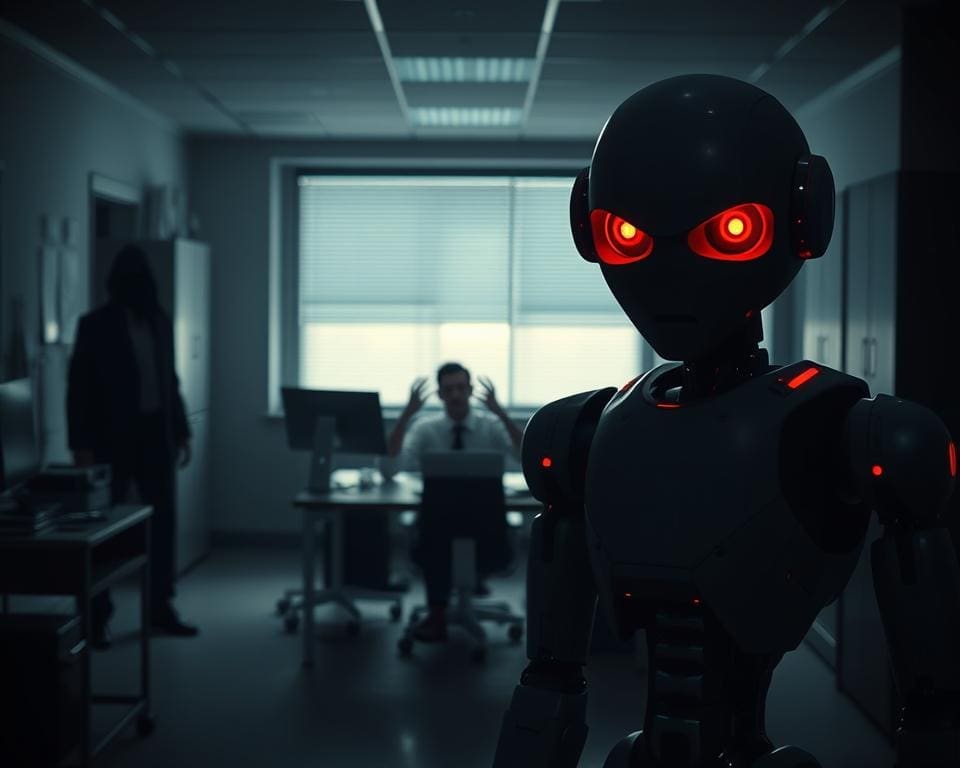The advent of artificial intelligence has stirred a whirlwind of discussions regarding its implications for job security and everyday life. As AI technologies permeate various sectors, many people find themselves questioning: Is AI plotting to steal your job and your snacks? This inquiry taps into a broader conversation about how AI is reshaping our professional environments and influencing consumer behaviour, particularly within the snack industry. As we embark on this exploration, it is essential to demystify the fears surrounding AI’s encroachment, shedding light on both its potential threats and the opportunities it presents.
The Rise of Artificial Intelligence in the Workplace
The evolution of artificial intelligence has marked a pivotal change in the workplace landscape. Initially, AI focused on automating simple tasks, but its capabilities have expanded to include complex decision-making processes. This shift mirrors the broader technology impact reshaping industries, aligning with the envisioned future of work.
Statistical data indicates a remarkable growth trajectory for the AI market within various sectors. Industries such as finance, healthcare, and manufacturing have emerged as early adopters of AI technologies, leveraging these tools to enhance efficiency and effectiveness. The integration of artificial intelligence is expected to flourish, offering solutions that redefine traditional roles and responsibilities.

As organisations increasingly incorporate AI, the importance of ethical considerations and regulations becomes paramount. Responsible management of these technologies ensures a balance between innovation and human interests. Embracing this change requires a forward-thinking mindset, fostering an environment where collaboration between humans and machines thrives, ultimately shaping a more dynamic future of work.
Understanding Job Automation
Job automation has become a defining feature of modern industries, reflecting technological progress while simultaneously raising concerns about workforce displacement. Understanding this phenomenon is essential for navigating today’s employment landscape.
What is Job Automation?
Job automation refers to the use of technology, particularly software and robotics, to perform tasks once carried out by human workers. This process often streamlines productivity by allowing machines to handle repetitive, mundane activities. As a result, businesses can operate more efficiently, reducing costs and improving output without significantly increasing their workforce.
How Job Automation Works
Job automation typically involves advanced AI algorithms that analyse workflows and identify tasks suitable for automation. These systems can process data at speeds and accuracies far beyond human capability, enhancing overall productivity. Machine learning technology plays a vital role, as it enables systems to learn from vast datasets and improve over time. While this innovation brings many benefits, it also catalyses workforce displacement, particularly within sectors characterised by routine tasks, such as retail and logistics. As these industries adapt to rapid advancements in technology, companies face growing pressure to reassess their workforce needs.
Is AI plotting to steal your job and your snacks?
The rise of artificial intelligence has stirred discussions surrounding job security in various sectors. As businesses increasingly adopt automation technologies, fears about the automation threat loom large. This situation raises pertinent questions regarding the types of jobs that will remain stable and those at risk of obsolescence.
AI’s Influence on Job Security
Many experts speculate that AI has the potential to dramatically change workforce dynamics. Jobs involving repetitive tasks face the highest risk as machines become capable of performing these functions more efficiently. Industries traditionally perceived as safe may not escape this trend, leading to anxieties surrounding job security for many employees. Workers may find themselves needing to adapt through reskilling to ensure their relevance in an evolving landscape.
Impact on Snack Industries and Consumer Behaviour
The impact on snack industries should not be overlooked. Automation allows companies to streamline processes, from production to distribution, ultimately reshaping consumer experiences. Enhanced technologies, such as personalised recommendations and automated supply chains, influence purchasing habits. Consumers enjoy convenience, driving changes in buying patterns and preferences. Over time, these shifts may create a noticeable gap between established brands and those that fail to adapt swiftly to these new consumer behaviours.
The Future of Work: Adapting to AI Advancements
The landscape of the future of work is rapidly changing, driven largely by the advancements in artificial intelligence. As AI continues to influence various industries, the necessity for adaptation becomes clear. Individuals must embrace lifelong learning, honing skills that AI cannot replicate. Flexibility will be essential, as traditional roles evolve and new opportunities arise.
Organisations play a crucial role in this transformation. Investing in training programmes that promote human-AI collaboration can help employees transition to new roles that emphasise creativity and emotional intelligence. These uniquely human abilities will not only remain relevant but become increasingly valuable in an era dominated by job automation.
Employers who foster a culture of continuous development will better equip their workforce for this dynamic future. By prioritising adaptability and creativity, businesses can ensure their teams thrive amidst the challenges posed by artificial intelligence. The future of work is bright for those willing to evolve alongside these technological advancements.
Technology’s Impact on Traditional Jobs
The relentless advance of technology introduces both challenges and prospects within the workforce. As organisations increasingly adopt automation, there is a palpable concern over job displacement. Yet, the evolving landscape bears transformative opportunities that can redefine careers and roles.
Job Displacement Risks
Many traditional jobs face an inherent risk of automation. The sectors most vulnerable include manufacturing, retail, and customer service. This shift often invokes anxiety among employees, worried about losing their positions to machines. Data suggests that significant portions of the workforce may need to adapt rapidly to these changes.
- Manufacturing jobs streamlined by robotics
- Retail positions affected by online shopping
- Customer interactions increasingly handled by AI algorithms
Transformative Opportunities and New Roles
Amidst concerns of job displacement, a multitude of transformative opportunities arise. The need for skilled professionals in emerging fields is growing, leading to the creation of new roles that did not previously exist. Positions such as data analysts, AI specialists, and cybersecurity experts exemplify this trend.
This shift requires individuals to develop new skill sets:
- Data interpretation and analysis
- Understanding AI technologies
- Creative problem-solving abilities
Embracing these changes can empower individuals to thrive in their careers, transforming job displacement into career advancement.
Addressing the Automation Threat
The automation threat looms large over various sectors, influencing the landscape of job security for many workers. To counter this, a multi-faceted approach involving policy interventions is essential. Investment in education and training programmes tailored to equip the workforce with relevant skills stands at the forefront of these efforts. This not only prepares employees for emerging roles but also emphasises adaptability in an ever-evolving job market.
Collaboration between government and businesses plays a vital role in creating ecosystems that foster job growth despite the technology impact of automation. Successful case studies from various industries illustrate how proactive measures can facilitate smooth transitions for affected workers. These examples serve as beacons of hope, demonstrating that the threats posed by automation can be mitigated through strategic planning and investment in human capital.
The emphasis on continuous learning and upskilling not only helps mitigate the automation threat but also inspires confidence in both workers and employers. By fostering environments where innovation and education are prioritized, society can navigate the challenges ahead while securing job stability for its workforce.
What You Can Do to Secure Your Job
In a world increasingly influenced by technology, securing your job requires a proactive approach. Embracing continuous education and upskilling is paramount in fortifying your job security against the automation threat. Whether it’s attending workshops, enrolling in online courses, or seeking professional certifications, staying informed and adaptable is essential in navigating the future of work.
Participating in discussions regarding AI ethics and regulations also plays a crucial role. Understanding the implications of AI on job dynamics helps not only in anticipating changes but also in shaping an industry that values human contributions. Engaging with colleagues and industry leaders about these topics can enhance your knowledge and allow you to advocate for a balanced integration of technology.
Finally, cultivating a mindset that embraces technology rather than fears it can lead to fruitful opportunities. Seek ways to collaborate with AI, utilising it as a tool to enhance your productivity and creativity. Remember, in a rapidly changing job landscape, those who adapt and evolve will find themselves leading the charge towards a prosperous and secure future.









